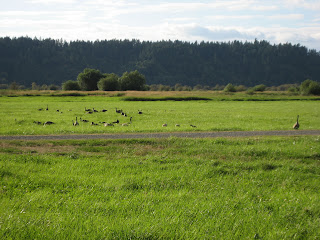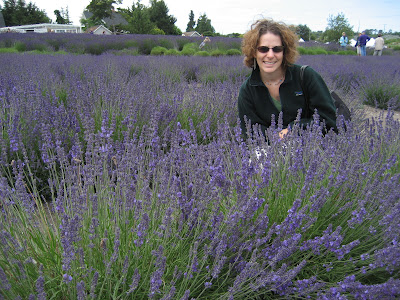Victoria lies just a few hours from our doorstep. We hit the road around 9:30 AM, drove across the new Tacoma Narrows Bridge and onto sleepy Kitsap Peninsula. Two-and-a-half hours later we reached Port Angeles on the Olympic Peninsula, parked our car, had a quick diner lunch, and boarded the ferry for the 90-minute crossing. We had full sun, light breezes, and great views of mountains on all sides. Fifteen minutes after pulling in we had disembarked, walked to our hotel to check in, and were on our way to our first-of-many outdoor cafes.
Victoria Harbor, excuse me, Harbour, bustles with sea traffic. As we pulled in we were surrounded by other ferries, executive yachts, small sailboats, cute local ferry taxis, and seaplanes. Everything worth seeing in Victoria is right here. The Parliament buildings stand side-by-side with old, majestic hotels. Horse-drawn carriages rumble along tree-lined streets chock full of street performers, artists, and ice cream stands. Downtown is only a few steps away, and it only takes one or two blocks to trade in cheesy tourist shops for cafes, chic clothing stores, gourmet food shops, coffee shops, and pubs. Z and I literally ate and drank our way across Victoria in our three-day visit.
The only time we left the sunny streets of Victoria was to visit the world-famous Butchart Gardens. In the 1910s Jeannie Butchart had an idea to beautify an exhausted limestone quarry that had supplied her husband's cement plant. The Butcharts combined the natural outline of the quarry with an mixture of rare and exotic plants to create the Sunken Garden. Later they carved out the authentic Japanese, Rose, and Italian Gardens. Today the gardens see over 1,000,000 visitors a year, plays host to a summer music festival, and is one of Canada's National Historic Sites. While the Northwest's mild climate allows the garden to exist all year long, I would highly recommend a visit on a late summer afternoon. The crowds wane, the shadows grow long, and the view from the patio with a glass of wine can't be beat.
Put Victoria on your list of must-sees. Leave your car behind, loosen your belt, and bring your camera.
(P.S. This blog is turning into a PacNW vacation guide. If you're getting bored, not to worry! The vacation is nearly over, and soon I'll return to riveting tales of dissertation writing, breathy choral auditions, and exciting whose-turn-is-it-to-do-dishes-tonight debates with Z!)









 That's the motto of the Rattlesnake Hills Wine Trail in the Yakima Valley. This is followed by a small disclaimer stating, "No rattlesnakes, just Washington's greatest wines!" Not terribly clever (or true for that matter, there are indeed rattlesnakes in the hills high above the valley), but the quality of the wine speaks for itself.
That's the motto of the Rattlesnake Hills Wine Trail in the Yakima Valley. This is followed by a small disclaimer stating, "No rattlesnakes, just Washington's greatest wines!" Not terribly clever (or true for that matter, there are indeed rattlesnakes in the hills high above the valley), but the quality of the wine speaks for itself.








